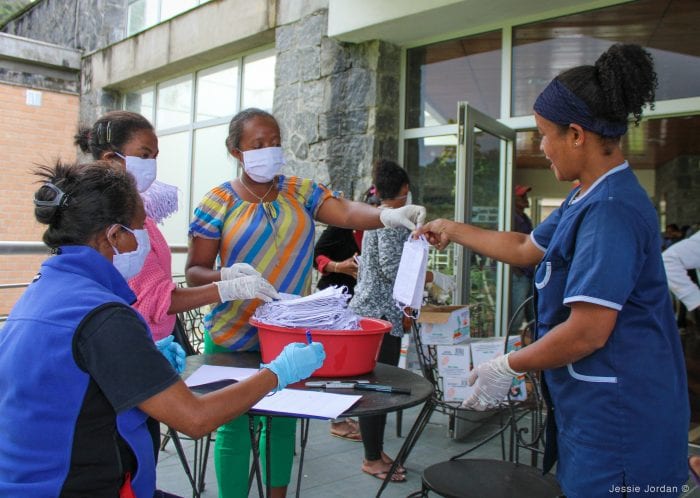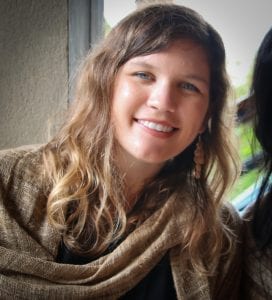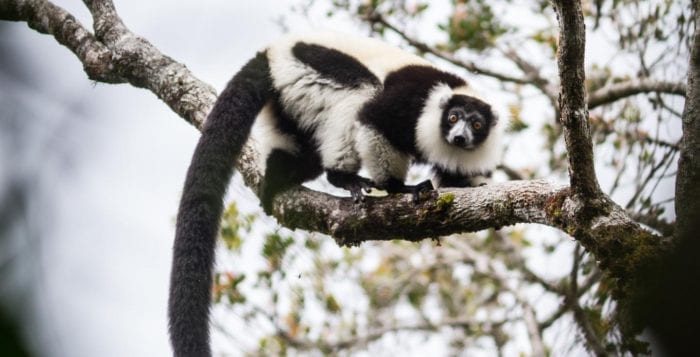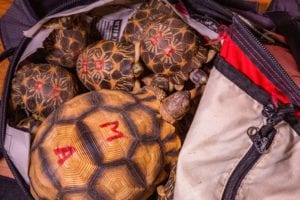By Daniel Dunaief
For only a short period of time, Patricia Wright was just a primatologist who studies the charming lemurs of Madagascar.
Now the Herrnstein Professor of Conservation Biology and Distinguished Service Professor at Stony Brook University, Wright first trekked to the island nation off the southwest coast of the African continent in 1986 to understand and study these unique primates.
Within a year, she realized she wouldn’t have much to observe and understand in a perilously short time if she didn’t also work to protect them, their habitat, and many other threatened and endangered animals and plants.
With the help of the government of Madagascar, Wright created a protected area known as Ranomafana National Park, which includes 41,500 hectares of space, keeping loggers, poachers and others from threatening to eradicate animals and plants that are unique to the country.
Between the original effort to create the national park and today, Wright has collected numerous honors and distinctions. She has won three Medals of Honor from the Malagasy government and become the first female recipient of the coveted Indianapolis Zoo Prize in 2014.
Recently, the Seneca Park Zoo in Rochester, New York named Wright its inaugural “Conservation Warrior,” providing her with a $20,000 prize in recognition for conservation work that has had a lasting, meaningful impact on species survival.
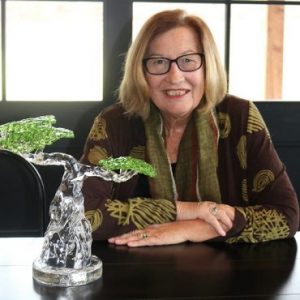
“Dr. Wright’s early years were spent in Rochester, New York and it is fitting that the inaugural Conservation Warrior award be bestowed upon arguably the most influential conservationist to come out of the Finger Lakes region,” Pamela Reed Sanchez, President and CEO of the Seneca Park Zoo Society, explained in an email.
The newly anointed conservation warrior recently traveled to Montreal as a member of the Madagascar delegation at the fifteenth meeting of the Conference of the Parties to the Convention on Biological Diversity, or COP-15.
While she’s in Montreal, she plans to meet with conservation donors in an all-out effort to save wildlife on Madagascar, where almost all the reptiles and amphibians, half of its birds and all of its lemurs are only found on the island nation.
Wright hopes to raise $250 million for the country and $50 million for Centre ValBio (CVB), the research station she created in Ranomafana in 2003 and that employs 80 Malagasy staff. CVB has developed a conservation network around CVB that includes work with 75 villages.
Drew Fellman, who directed and wrote the Island of Lemurs documentary, encouraged donors to support Wright’s efforts. Wright and CVB are at the “front line of defense and anyone who cares [about] wildlife and endangered species should lend them a hand,” Fellman wrote in an email. He described how some species of lemurs are down to fewer than 10 individuals and “without conservation, there will be nothing left to research.”
In areas where conservation isn’t a priority, the region has lost habitat and biodiversity. In the northern areas of Madagascar, loggers and timber exporters reduced rainforest areas to grasslands, she said.
In the bigger picture, Wright said Madagascar needs funding immediately as the country is “closer to the brink of extinction with so many more species.” Saving plants and animals in Madagascar extends beyond committing to the protection and stewardship of vulnerable creatures. It also could provide benefits for people.
“So many lemur species are close relatives [to humans] and contain genetic information” about Alzheimer’s, diabetes and other conditions, she said. Additionally, creatures like bamboo lemurs regularly eat large quantities of cyanide, which would kill humans. Understanding how they can tolerate such high quantities of cyanide could provide an antidote.
The forests in the national park, which might otherwise attract loggers, prevent erosion, silting and landslides, she explained.
The benefit of a research stations like CVB extend beyond gathering information and conducting experiments.
In a recent correspondence in Nature Communications, lead author Timothy Eppley, a postdoctoral fellow at San Diego Zoo Wildlife Alliance along with three other scientists including Wright, argues that field research stations “are on the front line of biodiversity conservation, acting as no-take zones that rewild surrounding ecosystems.”
In the correspondence, Eppley and his colleagues said that these stations are “invisible” in global environmental policy, despite their importance in conservation.
“Our point in the paper is that this has not been given any conservation attention,” said Wright. “Nobody is funding us for doing conservation” even though these sites are “conservation engines. We should be given recognition and more conservation money.”
Eppley, who leads SDZWA’s lemur conservation program, added that the Nature correspondence didn’t include any of the data the group collected.
While Eppley cautioned in an email sent from Madagascar that it’s difficult to generalize about conservation efforts at field stations, he said many have some conservation initiatives or projects, or that some element of their research includes a strong conservation component.
“Without the conservation piece, all other research will eventually disappear: we need the ecosystem and animals to exist in the first place,” he explained.
Eppley suggested that scientists often approach conservation initiatives that they can test on a small scale and then, if they are effective, find the best way of scaling up those initiatives for entire protected areas, landscapes, countries or broader geographic regions.
As for the honor Wright received from the Seneca Park Zoo, Eppley believes such recognition dovetails with their recent correspondence piece in Nature Communications.
Wright “founded CVB and has been tirelessly building it into a globally recognized field research station,” he wrote.
Bringing international recognition to the work being done at CVB “highlights the overall importance of field research stations and why they need to be included in global environmental policy frameworks,” Eppley added.

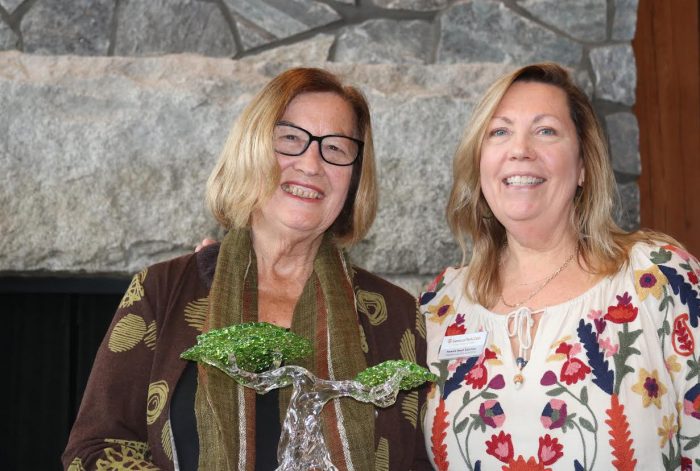
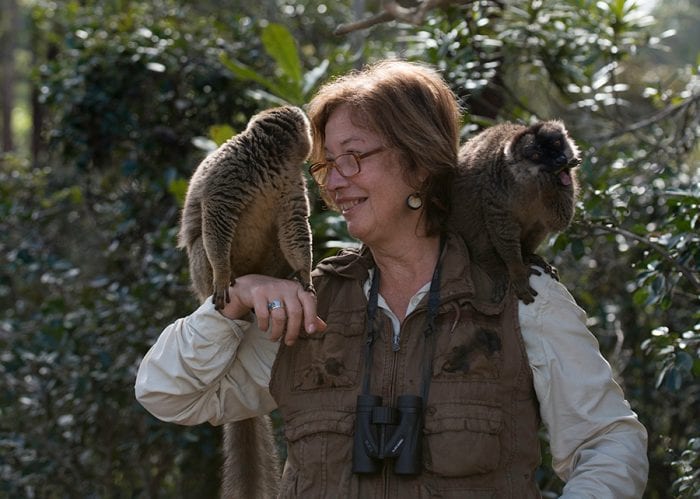
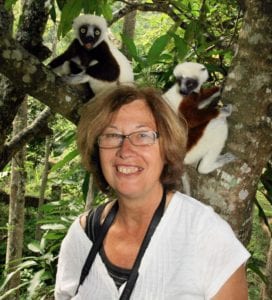 Wright: I flew back in January just after New Year’s. The Madagascar I saw was a lot different from New York. They have been able to stave off Covid by not allowing people into the country. It’s an island nation. There’s only one international airport. It was in some ways, a little bit better than in New York because there was less Covid. However, economically, it was a disaster because much of the gross national product for Madagascar is tourism and there has been absolutely no tourists there, and no researchers, either.
Wright: I flew back in January just after New Year’s. The Madagascar I saw was a lot different from New York. They have been able to stave off Covid by not allowing people into the country. It’s an island nation. There’s only one international airport. It was in some ways, a little bit better than in New York because there was less Covid. However, economically, it was a disaster because much of the gross national product for Madagascar is tourism and there has been absolutely no tourists there, and no researchers, either.